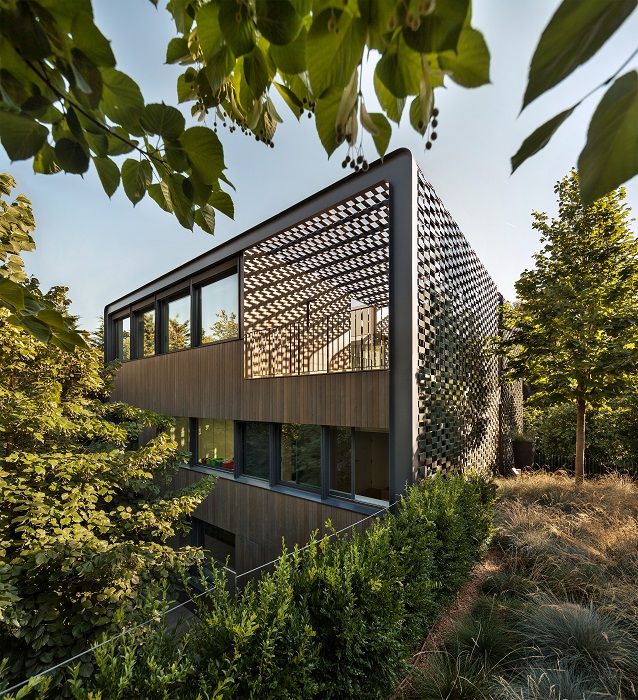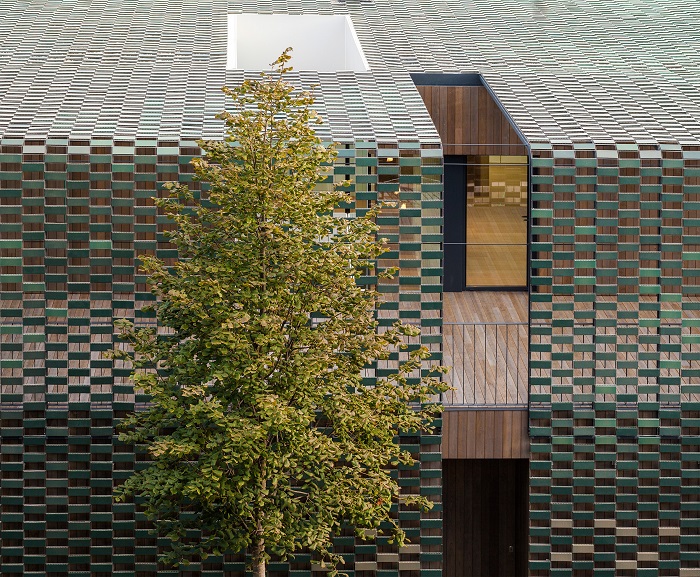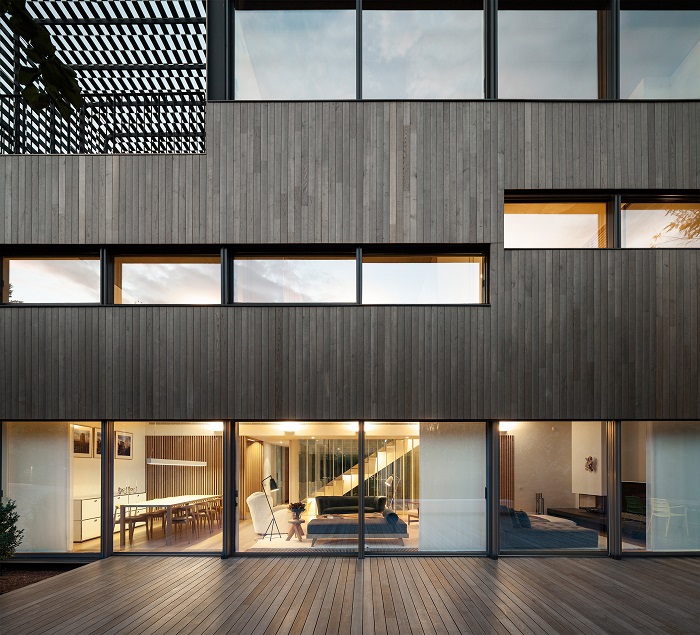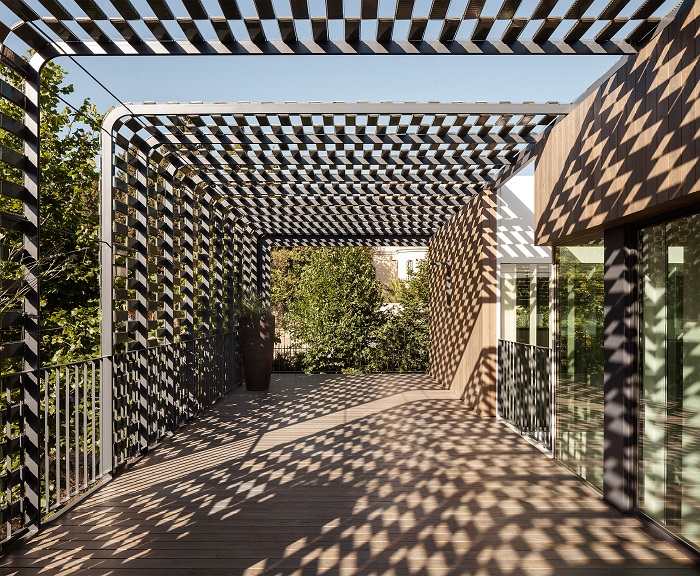TR House, Barcelona
In 2016, the architectural practice PMMT completed TR House in Barcelona, Spain. The unique chequerboard screen of glazed ceramic tiles that wraps around the house was designed with the intention of blending in with the surrounding gardens.
The gardens surround an existing 19th-century house that belonged to the parents of the client. This meant that the architects were faced with the challenge of integrating a new house into the landscape without obstructing the views from the existing house.
The steepness of the site required that the volume of the house was split, so that the three-storey building is partially submerged in the descending ground, and so that access could be provided by entrances on different levels.
Vertical chestnut boards clad the majority of the front and rear facades, with glazed openings that are positioned carefully so as to reveal views but maintain the inhabitants’ privacy.
The other facades are wrapped in a semi-solid surface, cascading down from the pergola on the upper floor terrace. This green surface is composed of vitrified ceramic tiles fixed to a stainless steel wire lattice. This innovative tile technique has been patented as Fabrik by the manufacturers Shildan Group. For more information, see Fabrik by Shildan.
The centre of the building contains an open-air patio, lined with glazing to enable natural light to permeate the surrounding rooms. At the rear of the building, the main living areas open onto a secluded area of decking.
Content courtesy of PMMT.
Photography copyright of Pedro Pegenaute.
[edit] Related articles on Designing Buildings Wiki
Featured articles and news
Key points for construction at a glance with industry reactions.
Functionality, visibility and sustainability
The simpler approach to specification.
Architects, architecture, buildings, and inspiration in film
The close ties between makers and the movies, with our long list of suggested viewing.
SELECT three-point plan for action issued to MSPs
Call for Scottish regulation, green skills and recognition of electrotechnical industry as part of a manifesto for Scottish Parliamentary elections.
UCEM becomes the University of the Built Environment
Major milestone in its 106-year history, follows recent merger with London School of Architecture (LSE).
Professional practical experience for Architects in training
The long process to transform the nature of education and professional practical experience in the Architecture profession following recent reports.
A people-first approach to retrofit
Moving away from the destructive paradigm of fabric-first.
International Electrician Day, 10 June 2025
Celebrating the role of electrical engineers from André-Marie Amperè, today and for the future.
New guide for clients launched at Houses of Parliament
'There has never been a more important time for clients to step up and ...ask the right questions'
The impact of recycled slate tiles
Innovation across the decades.
EPC changes for existing buildings
Changes and their context as the new RdSAP methodology comes into use from 15 June.
Skills England publishes Sector skills needs assessments
Priority areas relating to the built environment highlighted and described in brief.
BSRIA HVAC Market Watch - May 2025 Edition
Heat Pump Market Outlook: Policy, Performance & Refrigerant Trends for 2025–2028.
Committing to EDI in construction with CIOB
Built Environment professional bodies deepen commitment to EDI with two new signatories: CIAT and CICES.
Government Grenfell progress report at a glance
Line by line recomendation overview, with links to more details.
An engaging and lively review of his professional life.
Sustainable heating for listed buildings
A problem that needs to be approached intelligently.
50th Golden anniversary ECA Edmundson apprentice award
Deadline for entries has been extended to Friday 27 June, so don't miss out!
CIAT at the London Festival of Architecture
Designing for Everyone: Breaking Barriers in Inclusive Architecture.
Mixed reactions to apprenticeship and skills reform 2025
A 'welcome shift' for some and a 'backwards step' for others.































